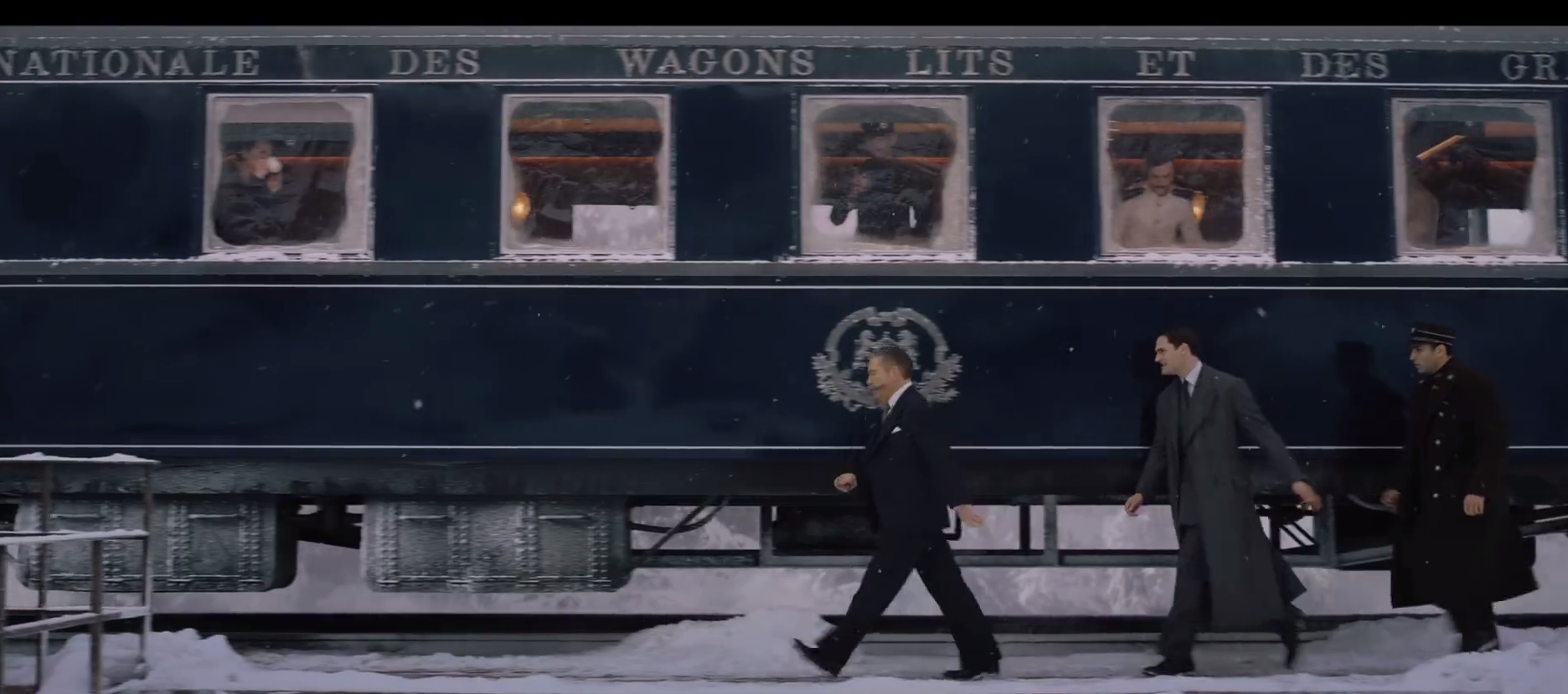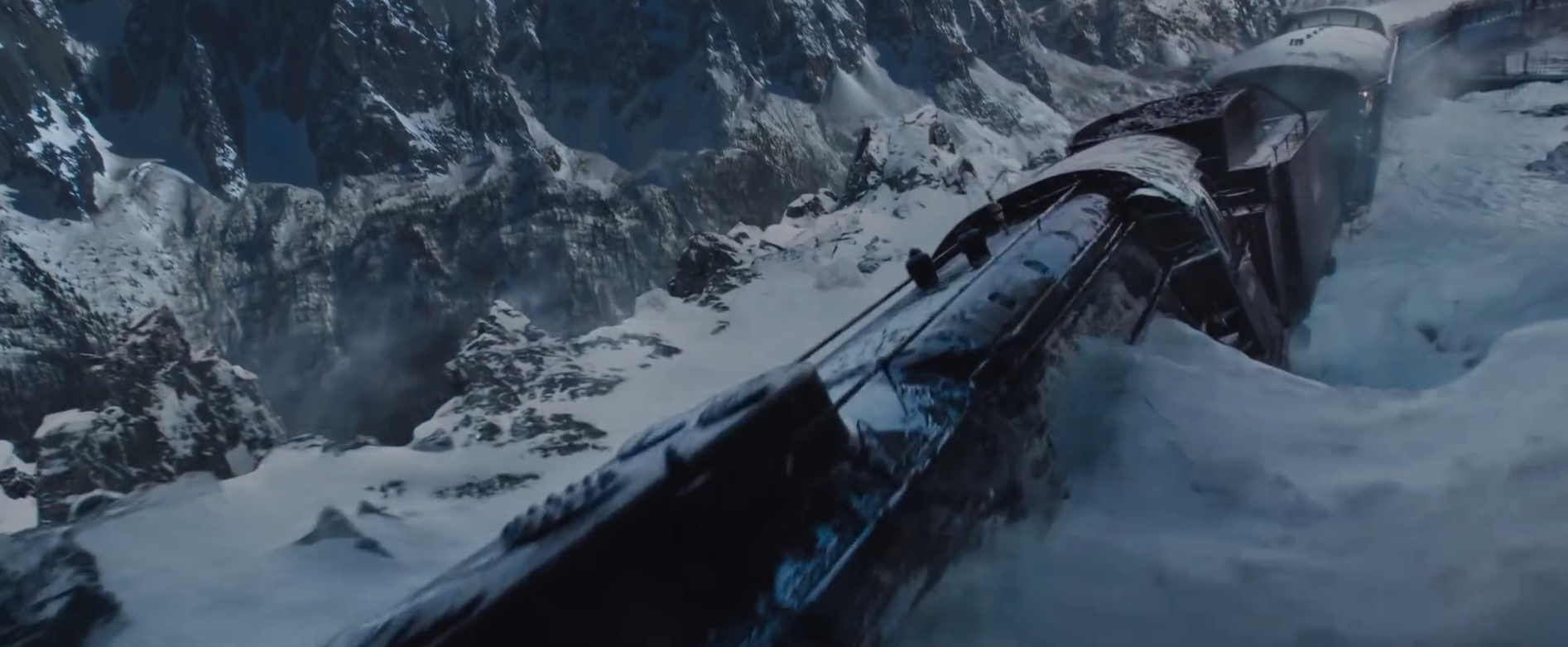Looking for a great movie featuring a train? If so, then consider avoiding the cost of a theater ticket for the most recent incarnation of “Murder on the Orient Express.” See the film if you were going to see a movie anyway, because there are high points and good acting, but it lacks greatness.
Based on Agatha Christie’s 1934 murder-mystery novel, the 2017 version of “Murder” features stage and screen actor-director Kenneth Branagh (“Valkyrie,” “Dunkirk,” “Harry Potter and the Chamber of Secrets”) as a fastidious and finicky, yet relatable version of Agatha Christie’s celebrated detective, Hercule Poirot. Screenplay and plot quirks that other critics pan, such as Poirot measuring his breakfast eggs to make sure they are the same size, are actually charming “Sheldon” moments for railfan moviegoers who know of times when they or their friends have done similar things and for the same inexplicable reasons.
The movie opens on Poirot in Istanbul, Turkey, in need of a return trip to London to consult on an important case for the British government. He’s just solved a case involving a priest, a rabbi, and an imam (no joke) and runs across a morally dubious acquaintance who happens to be in charge of entertaining wealthy individuals on the Istanbul-Paris Orient Express.
In short order, Poirot encounters passengers who’ll be on the train, a physician played by Law & Order: SVU alum, Leslie Odom Jr., and a young female acquaintance played by Daisy Ridley (“Star Wars: The Force Awakens”)
Poirot is nearly accosted by Michelle Pfieffer’s skillfully deceptive American flibbertigibbet character. And on it goes with Branagh meeting one personality after another in a star-studded line-up including a soon-to-be-murdered American gangster art dealer played by — who else? — Johnny Depp.
Before then, though, there are disagreements among passengers in the dining car, uncomfortable glances, and the awkwardness of living for a few days in close quarters with complete strangers — or are they strangers? Hmm.
Without giving away further details, the lead-up to the murder was appropriately confusing. The audience experiences everything in the third person either watching or standing next to Poirot.
And this is where the storytelling gets detoured off the mainline. As you’d expect, Branagh as Poirot looks for clues, investigates the murder scene, and hits it off well with encounters with Pfeiffer, Judy Dench as a Russian princess, and an unexpected plot twist with Willem Dafoe playing a lying Germanic professor.
But the writing lacks energy. It could be either an edge-of-your seat experience or a eyes-wide-open cerebral whodunit, but ends up trying to be both and accomplishing neither.
I confess to nodding off once somewhere during what I think was a Leslie Odom interrogation and getting a sharp elbow in time for a chase sequence.
Branagh ends the film with Poirot doing what he claims he would not: compromise his principles.
We know that at least a few of the cars from the actual Orient Express were used to film scenes for the movie and that in an interview with The Guardian, Branagh, who also directs the film, said he rode a modern version of the train and wanted audiences to “feel the snow, and smell the steam.”
Mr. Branagh, we know people who could have helped you accomplish this. Please ask us to introduce you next time.
The train station modeled in Istanbul appears to be nearly full of people jostling about for exactly one train: One 4-8-2 locomotive (from appearances) and four passenger cars carrying about 20 people. Sorry, that’s a bit much to ask.
The train itself has a sleeper, a lounge, and a diner, and apparently, one other sleeping car we do not see the inside of — and nothing else. Exact consists for 1930s Orient Express trains are less available in English than I would like, so I can’t vouch for the movie’s accuracy on this point. I can only say that the movie is consistent in that there are few passengers on a short train.
The passenger cars, or carriages, look opulent and inviting, as do the originals that appeared in London for the film’s U.K. premiere.
But somewhere in the snow-covered mountains of Yugoslavia — which in the movie resemble a cross between the mountains imagine in the Polar Express and those that appear in J.R.R. Tolkien’s Middle Earth — an avalanche of snow descends to the mainline below, derailing and nearly burying the locomotive.
For the next two or three days of movie time, passengers remain relatively comfortable and worry little or nothing at all about the cold. Never mind that coal-fired steam heat from a locomotive would be gone by that time (and possibly unsafe to keep connected) or that onboard heaters would likely have run out of fuel.
Who cares? There’s a murderer to catch.
Critics have pointed out that the rescue train from an unfrozen village depot in a valley below seems unlikely. And I agree. Imagine this: A crack luxury express train gets stuck in the mountains only to be rescued by a large hand-car staffed with almost a dozen track workers with shovels and hand tools. The thought is plausible in the 1880s, perhaps, but incredulous by the 1930s. It also insults Yugoslavs who would have at least had horses or mules if not a whole train available to do the job. But it supports the necessary delay for the film to proceed.
As I said above, what the film gets close to right is “train life”: Cramped quarters, minor inconveniences, the option to read a book while watching the scenery pass, and the omnipresence of train staff. True, there would be a sleeping car attendant in addition to the conductor, and the dining car kitchen would have been much smaller than what we see, but the limited roles doled out are at least congruous to the story — whether you like the story or not.
Bottom line? Actors and actresses in this film give performances worthy of their star statures, but the story and train lack. I give this six out of 10 “golden spikes.”
“Murder on the Orient Express” is now playing throughout the U.S. It is rated PG-13 for violence and thematic elements.
More information is available from 20th Century Fox.
Steve Sweeney is Trains’ associate editor for news and technology. He cuts asparagus and green beans to equal length before cooking, just as Poirot might — and for the same reason.
















Let’s remember that this movie and any movies involving trains and railroads are never accurate and don’t follow any realistic details or operations. This version of Murder on the Orient Express as well as any other movie
which involves murder and suspense and rail travel is geared purely for the general public and for entertainment and the majority of the viewing public are not railfans or maybe don’t even travel on a train or understand real rail operations and travel. Us railfans and rail travelers can spot over 100 or more inaccuraciesin these movies but
how often is the railfan or train enthusiast community asked for advice or consultation on these “train” movies?
By the way a 4 or 5 car train with only a few well heeled travelers would never make money for any railroad
Imagine in today’s economy or market driven world running only a 4 or 5 car longdistance train and with only a 3 or 4 person crew and staff. It would never last or make money. But its only a movie and geared to the general viewing public’s enjoyment
J
With the locomotive tilted at a rather severe angle, there’s no way I can see the crew keeping the fire lit to provide steam. The steam dome would be under water.
In the scenes showing the left side of the train (up to the locomotive), the side the avalanche hit the train, I kept wondering where they put the shoveled snow.
When the locomotive was dropped(!) onto the rails, with no lifting mechanisms visible, the question was, “How in the world did they do that?”
As for the movie itself, I enjoyed it. It was far more enjoyable than the 1974 edition, IMO. (I never read the book.)
I’ll save my money!
I saw the trailer, looked horrible, guns and ridiculous digital special effects. So I skipped it. A shame. I was excited by the life size cut out I saw in the theater a few weeks ago, but the trailer was rotten. To bad, I would have like to seen Penelope Cruz. Original was great, one of my favorite childhood movies.
“Murder On The Orient Express” (2017) is the first motion picture in theatres I have attended in ten years. There are more dimensions than in the 1974 original with added outdoor scenes to supplement interior scenes on the train.
The train in the original movie was more representative of a long distance commercial luxury train which carried more carriages. In the 2017 movie, the four-carriage consist is better suited for a chartered private train.
I had hoped the motion picture would stay with the train to its Paris destination. But, the journey ended with Detective Poirot disembarking at a remote rural station. The train then slowly recedes into the distance.
Overall, I enjoyed the picture and consider it good. I recommend viewing this and the original 1974 version for comparison.
Saw the movie and liked it. Very well done. Waited through the credits to see the railroad acknowledged. Nothing soever was listed.
The most important thing to railfans is the locomotive. This one had more makeup than Kenneth Branagh:
http://www.voisin.ch/vvt/materiel/autres/241-a-65_e.html
A Mountain type built for Reseau Est in 1931. The strange smoke deflectors, smokebox door headlight and snowplough were probably intended to evoke the image of the Austrian designed 2-8-4s in Romania or locomotives in Eastern Europe more generally and to disguise the very French appearance of this locomotive.
I’d agree with David Haisell about the train composition. In fact ten British Pullman cars were in use in Italy in the mid 1920s. Eight returned to Britain and two moved on to Egypt when purpose designed steel Pullman (parlour) cars were delivered, many from English builders who were early adopters of steel construction, I think including the one used in the movie.
Poirot’s appearance and mannerisms were based on Belgian refugees in England that Agatha Christie observed during the First World War, so the stress of the situation might have emphasised certain behaviours.
The consist is less than accurate. From the book we know there was a diner, the Istanbul-Calais coach, the Athens-Paris coach, and “the ordinary carriages” – likely regular non-Wagon Lits coaches attached to help pay the bills during the Depression. There was a Bucharest-Paris sleeper but that may have been seasonal. Pullman lounges were rare to nonexistent; a British Pullman was seconded during the 20s to run between Paris and Venice on the Simplon-Orient-Express, but it doesn’t sound like they went further east.
The Orient Express did indeed get stranded at least once in the 30s for about 10 days (in two different locations). They kept the steam going in the engine to assist with heating. Agatha Christie was stranded by a snowdrift on the Orient Express in the 30s as well, partly inspiring the book; I don’t know if it was the same train or a separate incident.
I’m not thrilled with Branagh’s version of Poirot’s moustaches, but this may actually be more accurate to AC’s vision of him. Could have done without the soul patch though.